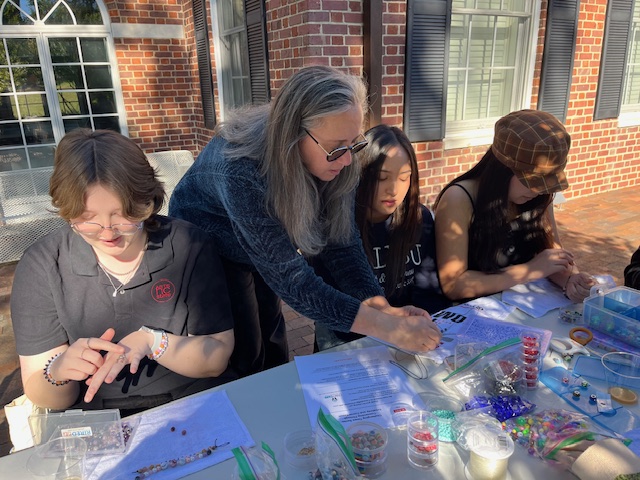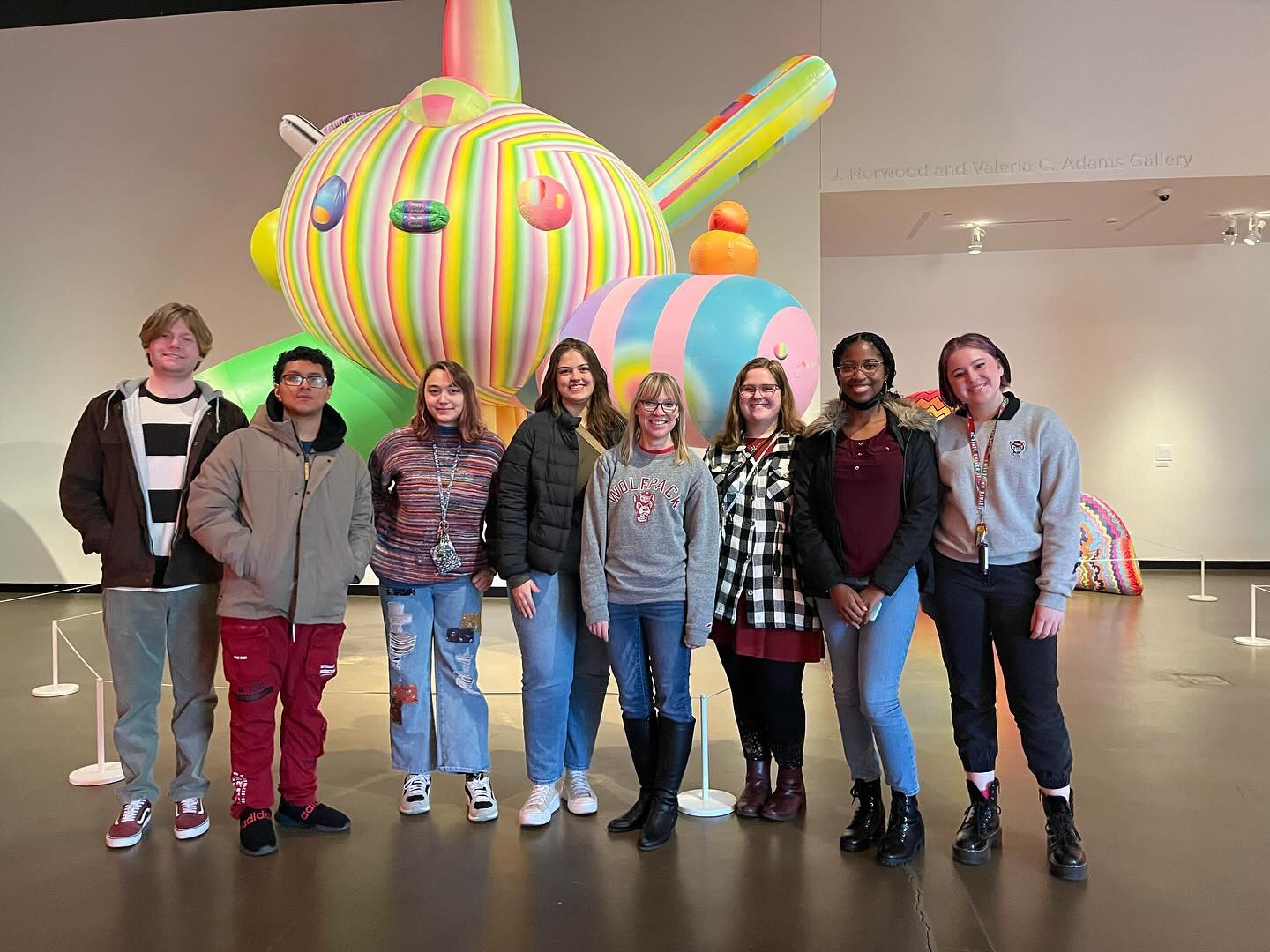Student Travel Stories: The National Arts Action Summit–Arts Advocacy Day
Story by Arts NC State Outreach & Engagement Intern Rebekah Middleton (graduating senior, philosophy major)
The National Arts Action Summit: Arts Advocacy Day
In March, I had the opportunity to attend the National Arts Action Summit in Washington, D.C., sponsored by Americans for the Arts. In its 32nd year, the Summit’s goal is to bring together America’s cultural and civic organizations along with thousands of grassroots advocates from across the country to advance and promote key legislative initiatives.
Arts Advocacy Day has been instrumental in increasing funding for federal cultural agencies – including the National Endowment for the Arts (NEA) – and spreading awareness about how tax, international, and education policies impact the arts. It was my pleasure to represent my school, my employer, and my state in Washington, and to be joined by so many other students and advocates.
The Summit kicked off with a day of legislative training sessions. Attendees learned how to effectively advocate for increased funding by participating in breakout sessions, hearing speakers, and collaborating with peers from their state to hear about the current arts issues circulating on Capitol Hill. I attended the Advocacy 101 training session first thing in the morning where I learned about policy literacy and advocacy strategy.
For those unfamiliar with “advocacy day,” it’s a time when members of an organization come together, either at their state legislature or in Washington, D.C., to make appointments with their representatives and talk about their cause. Meetings are usually scheduled back to back, and can make for a long day of walking between House and Senate office buildings to sit down with a staffer for thirty minutes at a time. During these meetings, advocates inform representatives (or in most cases, their staffers) of potentially overlooked or underrepresented groups and how policy change or impending legislation could impact these groups. In addition, advocacy day involves establishing a relationship with your representatives and letting your voice be heard as a constituent. This may seem like a daunting task, but it’s important to remember why your legislators are there – to serve. By advocating for what matters to you and your community, you are taking direct political action as a voter and member of the constituency.
In order to make meetings with legislators as simple and straightforward as possible (remember – these staffers sit in meetings all day, you want to make this an easy process for them, too!), conference organizers provided attendees with an advocacy strategy:
In deciding which variable to place in the equation, consider also: who is your target? What connects them to the issue you’re talking about? What is the timeline? What resources do you need?
An ask that my group made to our North Carolina representatives throughout the day was for continued funding to the National Endowment for the Arts (NEA). The NEA’s mission is to strengthen the creative capacity of the nation’s communities by providing all Americans with diverse opportunities for arts participation. These goals may be achieved through improving public access to the arts and promoting arts and creativity in schools without regard to socioeconomic status, race, religion, disability, or geography.
To give an example, let’s get a little technical here – this is an important part of ‘knowing the data,’ citing studies and research to present to whoever you may be talking to. We urged Congress to continue bipartisan support for the NEA with a budget of $167.5 million in the fiscal year (FY) 2020 Interior Appropriations bill. The Endowment’s direct grants reach 45.8 million adults and children per year who attend live arts events through NEA-supported programs. These events include lectures, festivals, performances, and exhibitions. In turn, NEA grants impact more than 16,000 communities engaged in NEA-supported projects, many of them benefiting from increased touring and outreach initiatives. Additionally, the nonprofit arts industry supports 4.13 million jobs in the arts and related industries. The Bureau of Economic Analysis and the NEA together calculated the arts and culture sector’s contributions to the gross domestic product at 4.2 percent, which amounts to an impressive $729 billion.
Sure, a moving story is an important part of the ask, but people (and specifically, politicians) usually like to hear numbers to back up your claims. However, remember that this step is to create legitimacy for yourself; if you don’t know the data, DO NOT make it up! It’s okay to say you’re not sure about specific numbers, plus it gives you a reason to look it up and send a follow up email! All of the staffers we spoke with certainly appreciated the data we presented in addition to the personal stories we offered.

Something that maybe should have been obvious to me but I perhaps never realized until attending this conference is that arts advocacy should be a professional responsibility. Sure, Advocacy Day only happens once a year in Washington, D.C., but that doesn’t at all mean that the campaigning for the arts has to be put on hold any other time of the year. A true arts and culture advocate should always be sticking up for their industry, their community, or in some cases, their profession. This advocacy doesn’t even have to be at the national or federal level – what issues in your community would you like to see addressed? If talking to politicians scares you, talk to your community leaders! Tell your colleagues and friends why the arts matter not just to you, but to your family, your school, and your local businesses.
At the end of this post, I will include a list of 10 Reasons to Support the Arts, containing facts and figures to make your case. This list can also be found on the Americans for the Arts website.
In closing, I would like to share a quote from Randy Cohen, VP of Research and Policy at Americans for the Arts, who I had the pleasure of hearing speak at the conference.
“The arts are fundamental to our humanity. They ennoble and inspire us – fostering creativity, goodness, and beauty. The arts bring us joy, help express our values, and build bridges between cultures. The arts are also a fundamental component of a healthy community – strengthening them socially, educationally, and economically – benefits that persist even in difficult social and economic times.”
I would like to personally thank my colleagues at Arts NC State for encouraging me to attend this conference. I would also like to thank Dr. Tom Stafford and the Stafford Arts NC State Student Travel Endowment, for providing financial support to aspiring young creatives like me.
10 Reasons to Support the Arts
- Arts improve individual well-being. 81% of the population say arts are a “positive experience in a troubled world”
- Arts unify communities. 73% of Americans agree that the arts “help us understand other cultures better,” a perspective observed across all demographic and economic categories
- Arts improve academic performance. Students engaged in arts learning have higher GPAs, standardized test scores, and college-going rates as well as lower drop-out rates – these academic benefits are reaped by students regardless of socioeconomic status
- Arts strengthen the economy. The nonprofit arts industry alone supports 4.6 million jobs and generates $27.5 billion in government revenue
- Arts drive tourism and revenue to local businesses. Attendees at nonprofit arts events spend an average of $31.47 per person, per event, beyond the cost of admission on items such as meals, parking, and babysitters – valuable commerce for local businesses
- Arts spark creativity and innovation. Creativity is among the top 5 applied skills sought by business leaders
- Arts drive the creative industries. A 2017 analysis of Dun & Bradstreet data counts 673,656 businesses in the U.S. involved in the creation and distribution of the arts, ranging from nonprofit museums, symphonies, and theatres to for-profit film, architecture, and design companies
- Arts have social impact. A high concentration of the arts in a city leads to a higher civic engagement, more social cohesion, higher child welfare, and lower poverty rates
- Arts improve healthcare. Nearly one-half of the nation’s healthcare institutions provide arts programming for patients, families, and even staff – leads to shorter hospital stays, better pain management, and less medication
- Arts improve the health and well-being of our military. The arts heal the mental, physical, and moral injuries of war for military service members and Veterans, who rank the creative arts therapies in the top 4 (out of 40) interventions and treatments
- Categories:




